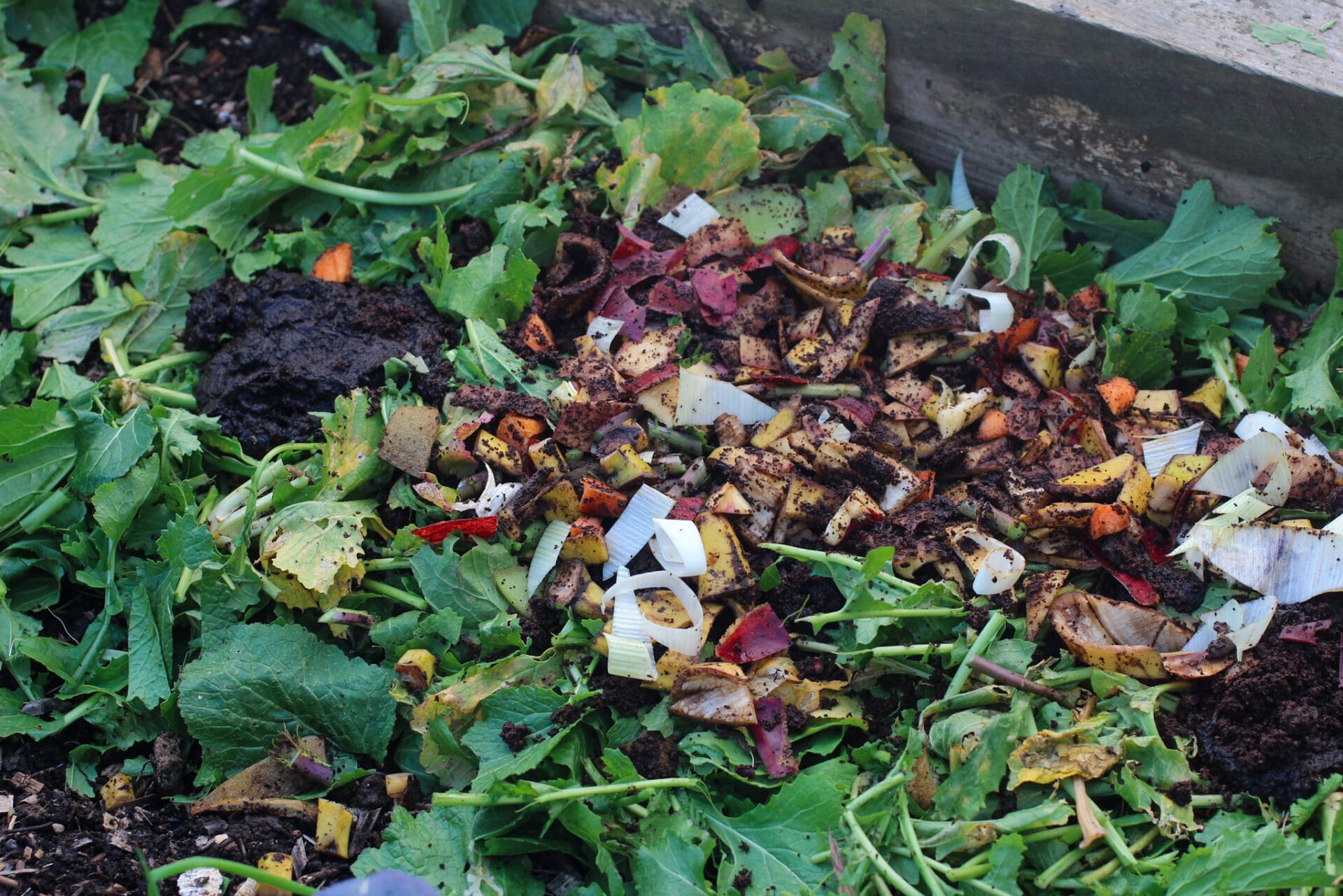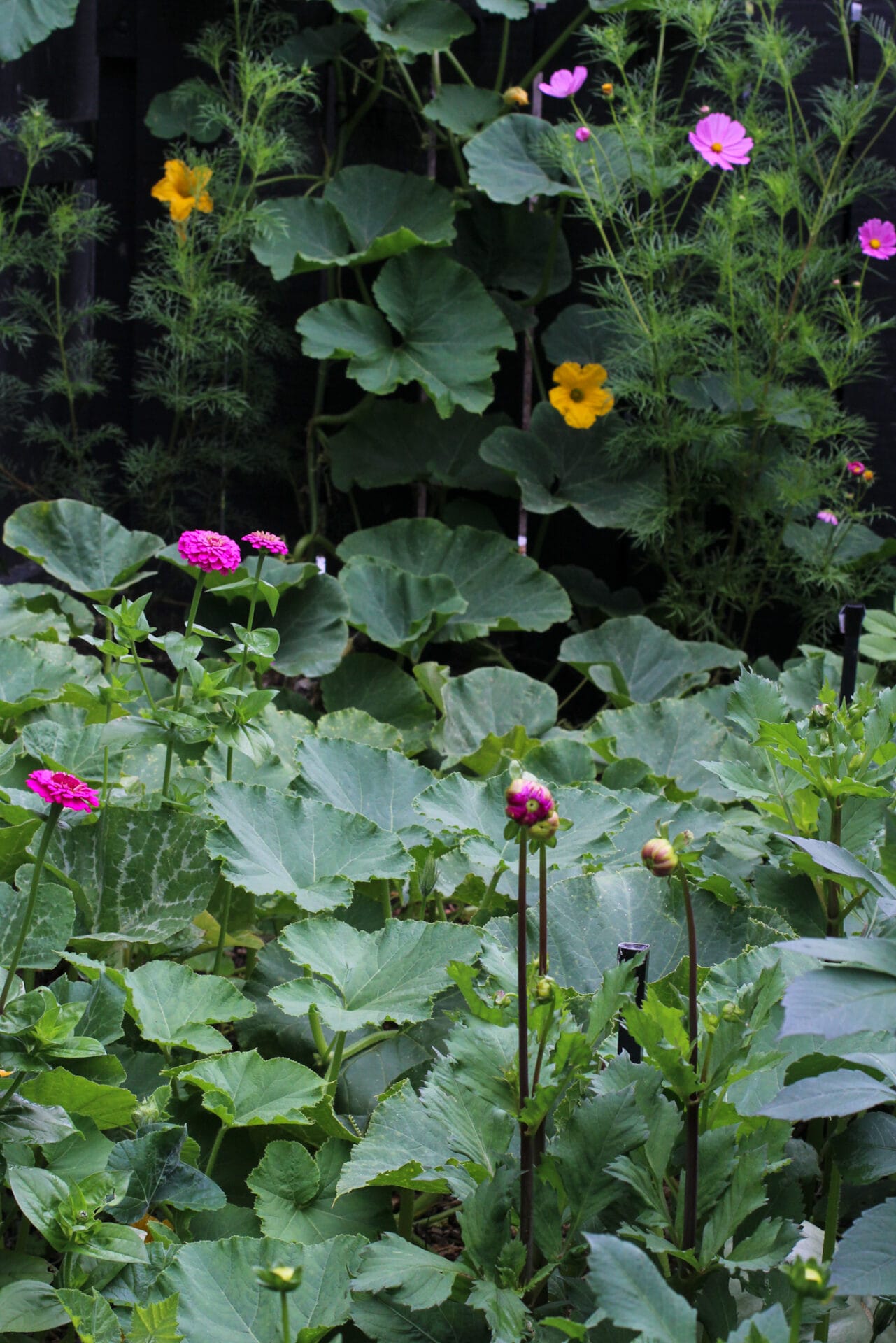Your cart is currently empty!
Floral abundance | How Canterbury gardener Kate Williams creates her flower field each season
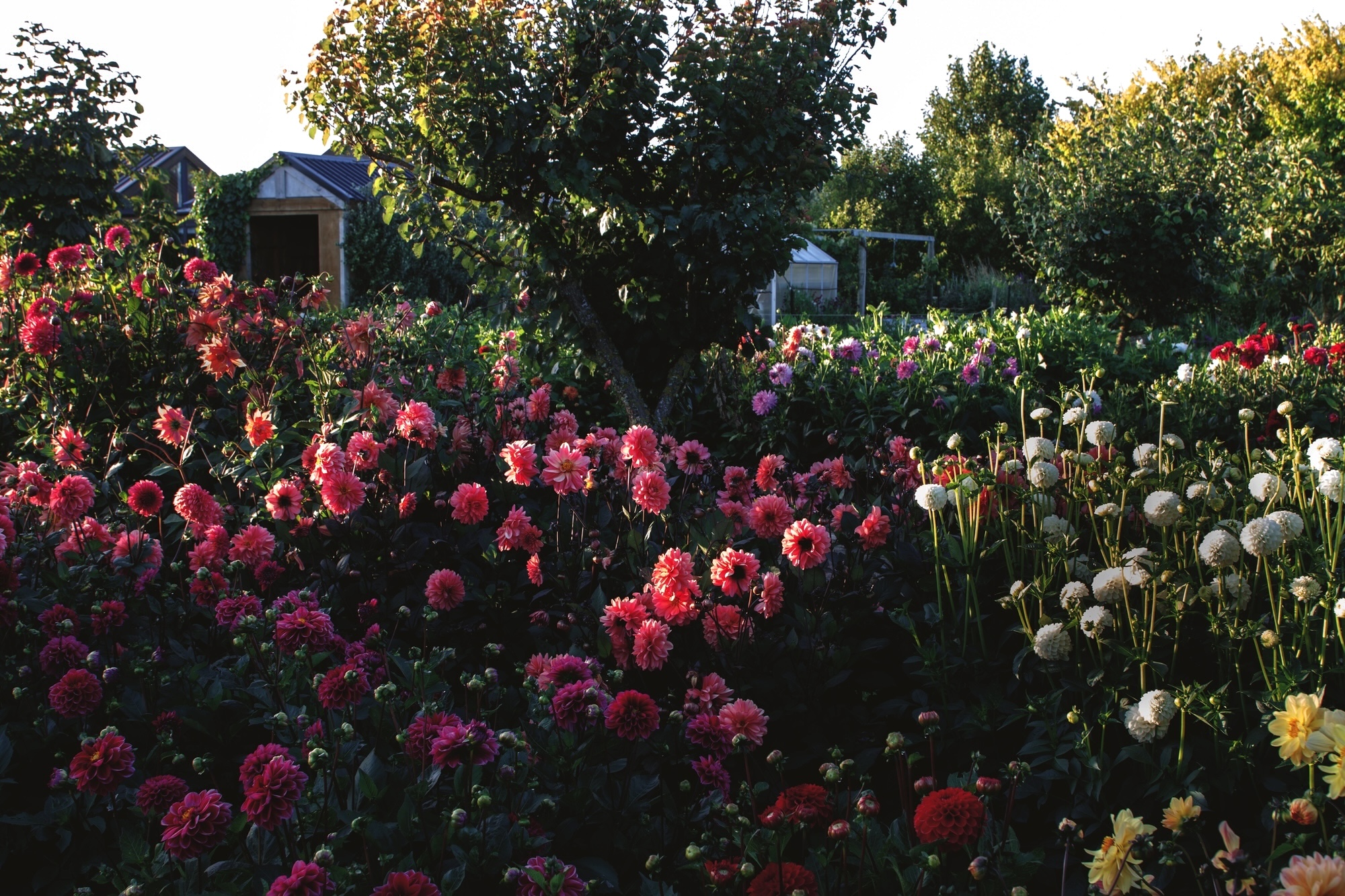
Floral abundance | How Canterbury gardener Kate Williams creates her flower field each season
— Excerpt from Floral Abundance: flowers, food and beauty for the soul by Kate Williams
The flower field
Arriving home from work one evening a few years ago, I was greeted by the familiar sound of our old tractor rumbling through the paddock –– a machine, incidentally, manufactured in the same decade as me! Curious, I asked Phil what he was up to. ‘Just ploughing a strip to plant our dahlia seedlings,’ he replied.
The year before, we’d lost almost 90 per cent of our dahlia tubers to waterlogged soils. They had once filled the garden with colour, and their absence left a noticeable void. Thankfully, we’d already begun a small breeding programme, so despite the setback, we had seedlings ready to plant –– a chance to start again.
If you’ve grown dahlias, you’ll know how addictive they can be. They multiply readily, reward generously, and seem to persuade even the most practical among us to pull up the front lawn for just a few more. Phil required no convincing; he was already hooked. In fact, the flower field was his idea, and he’s driven it forward with the same quiet determination that built our gardens –– and our life together.
Each season since that first planting, our growing area has expanded. As I write this book, we’re preparing to intensify the planting once again. Last season, dahlias made up around 60 per cent of the field, with over 40 other flower varieties filling the rest. Thousands of plants now stretch across the paddock, and remarkably, around 90 per cent have come from seed we’ve grown ourselves. The variety is extraordinary –– a rainbow of colour and form –– and surprisingly few have turned out as single-petalled varieties.
The flower field isn’t just about blooms, though, it’s about nourishment –– for us and for those who visit. In summer and autumn, guests wander the rows, buckets in hand, gathering armfuls of flowers. There’s birdsong in the air, and a stillness that settles into the soul. Some visitors return weekly, calling it their ‘happy place’. Others come as part of groups seeking respite from challenging circumstances in their lives, and we’ve been thrilled to share this space with those needing restoration or a moment of peace.
Of course, the field is no small undertaking, and it’s the reason my first book was titled The After-hours Stylist. Every hour after my corporate day job was offset against nurturing what began as a humble strip of soil. Despite the work, I feel profoundly grateful to be surrounded by this beauty. Early morning before heading to the office, I would walk a quick loop through the flowers, a sensory top-up for the day ahead.
––
The steps to preparing & planting Kate’s flower field:

Delicate beginnings:
Dahlia seedlings, nurtured from tubers saved during our autumn seed harvest, are now ready for spring planting. We do our best to manage pests organically as seedlings are so vulnerable. We’ve learnt much of this by trial and error over the years.

Precision planting:
Each year, Phil plants the majority of our thousands of seedlings in carefully spaced rows for ease of care. His methodical approach is easy to spot –– particularly when compared with those I have planted.
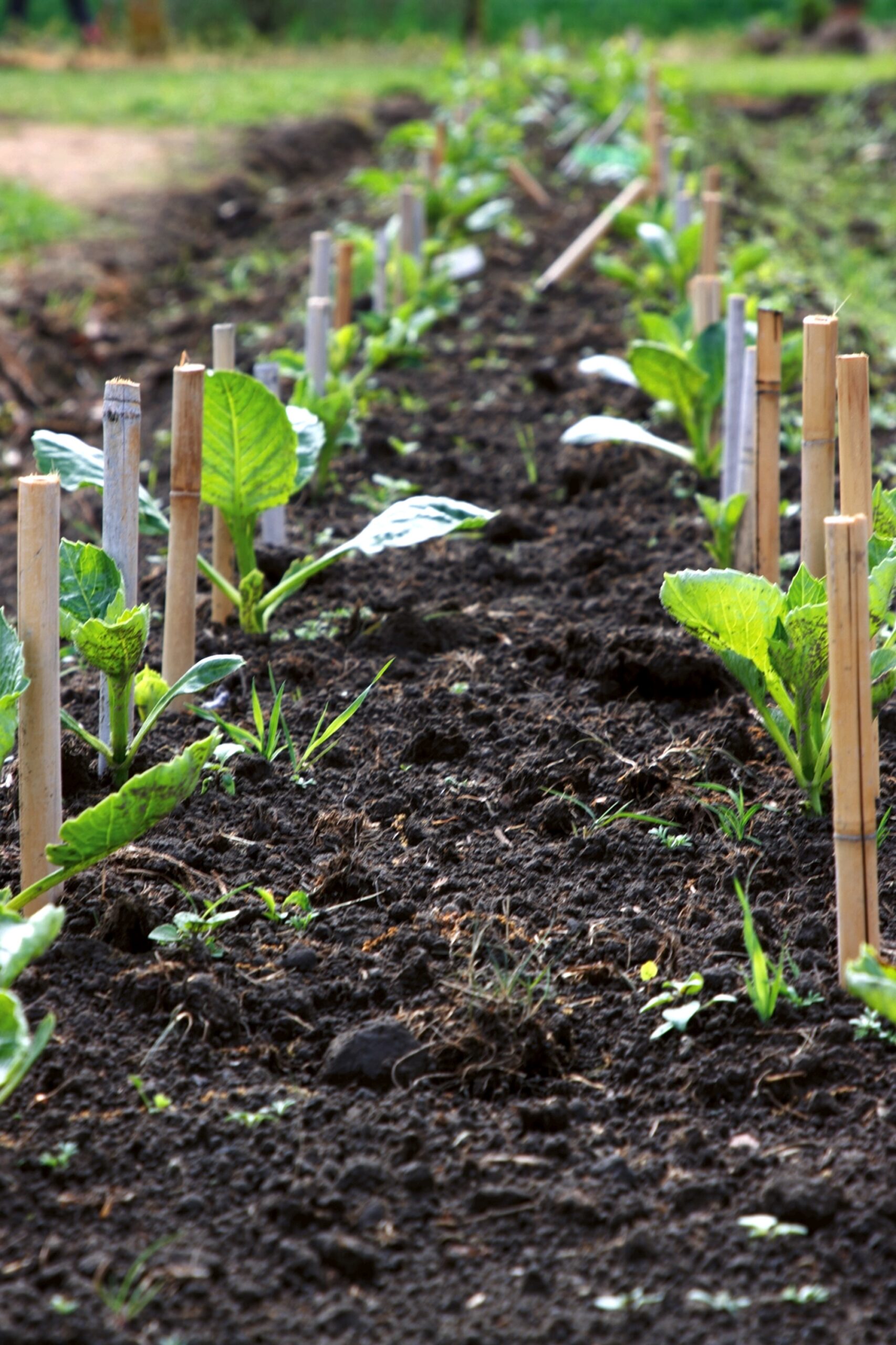
Crop rotation:
Seedlings are planted in new locations each season to support soil structure and overall plant health. Crop rotation is a simple but essential step in our growing process.

Safeguarding:
Some beds are given extra protection to guard against late frosts and pests: frost cloth, netting and blood and bone. Once the seedlings establish, our focus shifts to shielding them from the strong Canterbury nor’west winds, which can undo months of growth in a single gust.
––
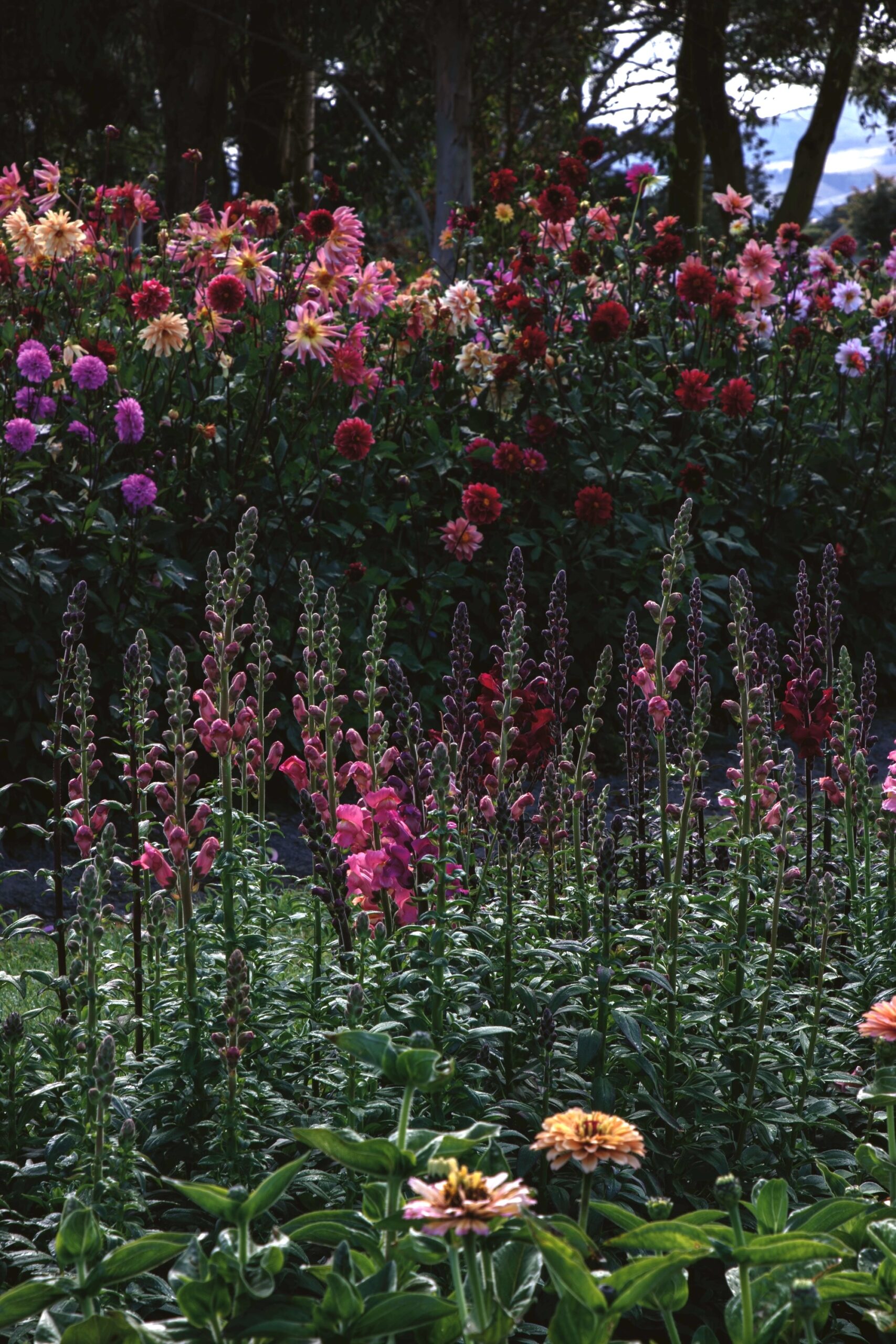
What Kate plants in her flower field:
- Sunflowers
- Amaranthus
- Mignonette
- Dahlia
- Zinnia
- Echinacea (red)
- Delphiniums
––
Related reading: Through the seasons in Kate Williams’ Garden — The After-hours Stylist

Floral Abundance: Flowers, food & beauty for the soul by Kate Williams
Floral Abundance: Flowers, food and beauty for the soul by Kate Williams, photography by Kate Williams, published by Bateman Books, RRP $69.99, release date November 2025
Buy Now
